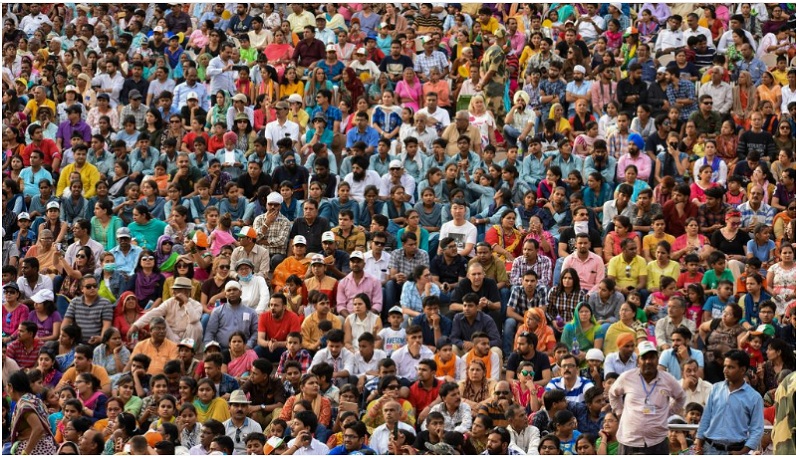By Aneesh MR
India surpassed China as the world’s most populous country in 2023, a demographic milestone that is both cause for optimism and concern. While a young, growing population offers potential for innovation and growth, it also raises urgent questions about the country’s readiness to absorb the millions entering the labour market each year.
The central questions are: Does the Indian economy generate adequate employment opportunities for the youth population? Can the Indian labour market accommodate the large pool of the youth population?
Poonam Muttreja, executive director of the Population Foundation of India, says the critical challenge lies in creating enough employment for the youth bulge. Demographer Jennifer Sciubba, however, warns that India’s population, though young today, is also on a long-term path towards ageing and eventual decline. The shape of this demographic curve will determine not just the economy’s capacity to grow but how equitably that growth is shared.
Data from the Periodic Labour Force Survey (PLFS) 2022–2023 show that people aged 15 to 29 account for 26.6 percent of India’s population. That is a striking contrast to Germany, France, the United Kingdom and the United States, where youth make up less than 18 percent, and to Japan and Italy, where the figure is below 12 percent.
A large and dynamic youth base gives India a potential edge. If their skills and energy are harnessed effectively, young Indians could drive innovation, productivity and entrepreneurship—key ingredients in the country’s goal of becoming a developed economy by 2047.
Yet India’s demographic dividend is far from uniform. Calculations based on PLFS data by this author shows that the north-eastern states such as Assam and Meghalaya have a much larger share of children under 15, while southern and coastal states are already ageing.
Kerala’s population aged 60 and above stands at 20.4 percent, higher than its child population of 18.5 percent. Tamil Nadu and Goa follow similar trends, with older residents now matching or outnumbering the young.
By contrast, Uttar Pradesh and Bihar remain youthful, with higher proportions of children and relatively few elderly citizens. Urbanised and industrialised regions such as Delhi, Chandigarh and Maharashtra display a more balanced age profile, with strong concentrations of working-age adults.
The job creation challenge
Economists note that while India’s demographics appear favourable overall, its labour market has struggled to keep pace. Job creation has not matched the growth of the workforce, raising doubts about how far the population boom can be turned into an economic advantage.
According to PLFS 2023, India’s unemployment rate stood at 5 percent on the “current weekly status” measure. But data from the Centre for Monitoring Indian Economy (CMIE) show the rate rose to 7.6 percent in October 2025.
Unemployment among young people—and especially among educated youth, particularly women—is strikingly high. In Goa and Kerala, where the share of the youth population is below the national average, calculations by this author based on PLFS data show that female youth unemployment stands at 41.3 and 43.8 percent respectively. Among degree-holders, rates remain severe, reaching 39.5 percent for women in Jammu and Kashmir and 32 percent in Rajasthan.
These figures expose two intersecting problems: declining youth populations in some states, and soaring educated unemployment in others. Simply adding skills programmes may not be enough, analysts caution; understanding how the labour market actually functions is equally vital.
Emerging technologies add another layer of complexity. Artificial intelligence and robotics are expected to reshape employment patterns worldwide, and India is no exception. The World Economic Forum’s Future of Jobs Report 2023 points to both job creation and job losses across sectors linked to environmental, social and governance (ESG) goals.
But the same report warns that sluggish economic growth, high living costs, supply bottlenecks and rising input prices continue to erode employment. The outcome depends on how well India can adapt to technological change without leaving its workforce behind.
India’s skill gap—estimated at 30-40 percent in the India Employment Report 2024—remains a major hurdle. This means 30-40 percent of the workforce lacks the necessary skills to meet job requirements. Upskilling alone cannot solve the employment challenge; job generation must happen alongside.
Government schemes such as the Pradhan Mantri Mudra Yojana, Atmanirbhar Bharat Abhiyan, Start-up India and Digital India have encouraged entrepreneurship and digital inclusion. Yet comparisons of PLFS data from 2017–18 and 2022–23 show little improvement in self-employment. In 2017-18, 17.29 percent of people found employment as self-employed, which increased to 20.43 percent in 2022-23, according to calculations by this author.
For these schemes and initiatives to make a real impact, they need to become more inclusive and reach the millions of young Indians still seeking work. Without that, many job seekers will continue to move abroad for employment and higher education, taking their talent with them.
India’s demographic advantage will not last indefinitely. The current youth surge represents a one-time window to boost productivity before the population begins to age – which is likely to happen by 2051. If the country can align education, skills and job creation, it could set the foundation for sustained prosperity. If not, the much-heralded “demographic dividend” may become a demographic burden—and the dream of becoming a developed nation by 2047 will remain just that.
Aneesh MR is an Assistant Professor in Christ (Deemed to be university).
Brinda Muralikannan, a Masters student in Statistics at Christ (deemed to be university), contributed to this article.
Originally published under Creative Commons by 360info™















